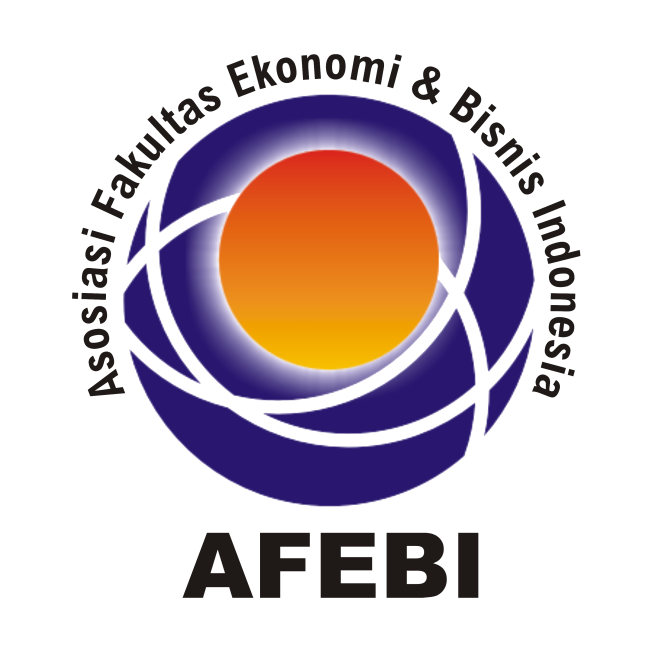Aspects influencing the foreign exchange reserves of Indonesia
DOI:
https://doi.org/10.52300/grow.v9i2.12366Keywords:
foreign debt, rupiah exchange rate, net exports, Indonesia's foreign exchange reserves, ECMAbstract
Analysis of Factors Affecting Indonesia's Foreign Exchange Reserves using the Error Correction Model (ECM) Approach. This study aims to determine and analyze the effect of American interest rates, Indonesian interest rates, foreign debt, the rupiah exchange rate, net exports and foreign investment on Indonesia's foreign exchange reserves in 1991-2022. The data used in this study is time series data, using secondary data obtained from the publication of the official websites of Bank Indonesia, the World Bank and the Central Bureau of Statistics, totaling 32 years. The analysis technique used in this study is the error correction model with the Eviews 10 tool. The results of this study indicate that in the long term, American interest rates and Indonesian interest rates have a negative effect on Indonesia's foreign exchange reserves. Foreign debt, rupiah exchange rate and net exports have a positive influence on Indonesia's foreign exchange reserves. Meanwhile, foreign investment has no effect on Indonesia's foreign exchange reserves. In the short term, American interest rates, Indonesian interest rates, rupiah exchange rates, net exports and foreign investment have no effect on Indonesia's foreign exchange reserves. Meanwhile, foreign debt has a positive effect on Indonesia's foreign exchange reserves
Downloads
References
Akdogan, I. U. (2020). Understanding the dynamics of foreign reserve management: The central bank intervention policy and the exchange rate fundamentals. International Economics, 161, 41–55.
Arafah, N. (2022). Analysis of the Effect of Regional Financial Independence on Economic Growth and Poverty Level of Regional Communities in West Kotawaringin Regency. Journal Magister Ilmu Ekonomi Universtas Palangka Raya: GROWTH, 8(1), 17–22.
Arifin, M. Z., & Juniawaty, R. (2022). Analyzing the influence of Export and Import on the Foreign Exchange Reserves of Indonesia from 1997 to 2018. Jurnal Pusat Penelitian Ekonomi Indonesia, 1(1), 24–30.
Basuki, A. T., Purwaningsih, Y., Soesilo, A. M., & Mulyanto, M. (2020). The Effect of Fiscal Policy and Foreign Direct Investment on Regional Economy in Indonesia. Jurnal Ekonomi & Studi Pembangunan, 21(1), 53–68.
Beatris, D., & Zakiah, W. (2022). Peranan Sektor Industri, Penanaman Modal, Tenaga Kerja dan Perdagangan Luar Negeri terhadap Pertumbuhan Ekonomi di Provinsi Kalimantan Tengah. Jurnal Ekonomi Integra, 12(1), 123–142.
Caplinska, A., & Tvaronavičienė, M. (2020). Creditworthiness place in Credit Theory and methods of its evaluation. Entrepreneurship and Sustainability Issues, 7(3), 2542.
Carrasco, C. A., & Tovar-García, E. D. (2021). Trade and growth in developing countries: the role of export composition, import composition and export diversification. Economic Change and Restructuring, 54, 919–941.
Dzwigol, H., & Dzwigol-Barosz, M. (2020). Sustainable Development of the Company on the basis of Expert Assessment of the Investment Strategy. Academy of Strategic Management Journal, 19(5), 1–7.
Fanelli, S., & Straub, L. (2021). A theory of foreign exchange interventions. The Review of Economic Studies, 88(6), 2857–2885.
Forbes, K., Hjortsoe, I., & Nenova, T. (2018). The shocks matter: improving our estimates of exchange rate pass-through. Journal of International Economics, 114, 255–275.
Gujarati, D. N. (2021). Essentials of econometrics. Sage Publications.
Ho, S.-H., & Saadaoui, J. (2022). Bank credit and economic growth: A dynamic threshold panel model for ASEAN countries. International Economics, 170, 115–128.
Inoue, A., & Rossi, B. (2019). The effects of conventional and unconventional monetary policy on exchange rates. Journal of International Economics, 118, 419–447.
Katmas, E., & Indarningsih, N. A. (2022). The Effect of BI Interest Rate, Exchange Rate, and Inflation on The Indonesian Sharia Stock Index (ISSI). Indonesian Interdisciplinary Journal of Sharia Economics (IIJSE), 5(2), 768–782.
Magdalena, S., & Suhatman, R. (2020). The Effect of Government Expenditures, Domestic Invesment, Foreign Invesment to the Economic Growth of Primary Sector in Central Kalimantan. Budapest International Research and Critics Institute-Journal (BIRCI-Journal), 3(3), 1692–1703.
Mankiw, N. G. (2022). Government debt and capital accumulation in an era of low interest rates. National Bureau of Economic Research.
Purba, A. S., Tiawon, H., & Beatris, D. (2023). Analisis Faktor-Faktor Yang Mempengaruhi Cadangan Devisa Indonesia Dengan Pendekatan Error Correction Model (ECM). JEPP: Jurnal Ekonomi Pembangunan Dan Pariwisata, 3(2), 131–145.
Rahman, R. E. (2021). Understanding Indonesia’s exchange rate behavior. Studies in Economics and Finance, 38(2), 189–206.
Rangkuty, D. M., & Hidayat, M. (2021). Does Foreign Debt have an Impact on Indonesia’s Foreign Exchange Reserves? Ekuilibrium: Jurnal Ilmiah Bidang Ilmu Ekonomi, 16(1), 85–93.
Salvatore, D. (2019). International economics. John Wiley & Sons.
Salvatore, D. (2020). Growth and trade in the United States and the world economy: Overview. Journal of Policy Modeling, 42(4), 750–759.
Siregar, L. K. (2020). Analysis of the Effect of Investment, Inflation, Credit Interest Rates, Exchange Rates on Mineral Fuel Exports in Central Kalimantan Province. Journal Magister Ilmu Ekonomi Universtas Palangka Raya: GROWTH, 6(1), 54–66.
Sugiyono, P. D. (2019). Metode Penelitian Pendidikan (Kuantitatif, Kualitatif, Kombinasi, R&d dan Penelitian Pendidikan). Metode Penelitian Pendidikan, 67.
Suhatman, R., Hukom, A., & Zakiah, W. (2022). Financial Policy Analysis of Infrastructure Development During the Covid-19 Pandemic in Palangka Raya City. Budapest International Research and Critics Institute-Journal (BIRCI-Journal), 5(2).
Susilawati, S., Falefi, R., & Purwoko, A. (2020). Impact of COVID-19’s Pandemic on the Economy of Indonesia. Budapest International Research and Critics Institute-Journal (BIRCI-Journal), 3(2), 1147–1156.
Sutarjo, S., Murti, W., & Saleh, S. (2021). The Effect of Export Import, Inflation, Interest Rates, and Exchange Rates Against Indonesia’s Economic Growth. International Journal of Business, Economics and Management, 4(2), 449–460.




